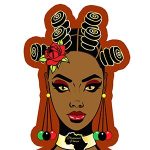You might think that only hairstylists and barbers need to know the technical terms of their craft. The terminology used by professionals can be a little bewildering for clients, but by having a basic understanding of the most commonly used terms, you are much more likely to get what you want when you ask a professional to style your hair.
Here are some of the most common and important terms that men and women should know when talking to their hairstylist or barber:
9 Common Hair-styling Terms for Men
- Taper vs Fade – these two terms refer to the length of a short back and sides cut. They mean basically the same, but a taper isn’t trimmed as close to the scalp as a fade is, and it will generally leave more on both sides. When asking for either of these two cuts, be prepared to tell your barber which number you’re looking for from 1 to 8. Level 1 leaves about 1/8″, and Level 8 leaves a full inch.
- Quiff vs Pompadour – the Quiff hairstyle is for men with medium length, straight hair, and it is generally combed straight back with no parting, to give a really lush appearance. The Pompadour is more formal in appearance, but is also combed straight back and is piled high on the top of the head.
- Undercut – the undercut style has volume, such as a longer combover or waviness on the top of the head. The sides, back, and nape of the neck can be short, or even buzzed. This combination seems like two unconnected haircuts and is designed to achieve a highly dramatic effect, or something fashionable, but less extreme.
- Buzz Cut – this is a hairstyle you can achieve all on your own, provided you have a good set of clippers. All that’s needed is to trim close to the scalp, all over the head.
- Crew Cut – also known as the ‘Ivy League’, this style is somewhat longer than a buzz, and gives the wearer something of a collegiate look all around.
- Caesar Cut – this is a lot like the crew cut, but slightly longer and tousled with no visible parting. It is left long enough in front that it can be pulled forward to form feathery bangs on the forehead.
- French Crop – when asking for a cropped hairstyle, you will need to be prepared to tell your barber how the sides should be tapered. On top it has a short but well-defined part but does not spill over the forehead as bangs.
- Spike – a style that was popular in the 90’s and is now making a comeback. The spike uses pomade to push medium length hair straight up on top of the scalp, with sides trimmed close to the scalp.br/>
- Skin and Bald Fade – this style will leave a full head on top, while gradually tapering off to bare skin when it reaches the neck.










9 Common Hair-styling Terms for Women
As you might expect, there are quite a few terms associated with hair-styling for women, and those discussed below will focus on two of the most important areas: cutting and styling.
Since these are the most crucial areas associated with women’s hairstyles, they will include the greatest number of terms and expressions related to hairstyles.
Cutting Terms
- Asymmetrical Cut – in this type, more will be positioned or left longer on one side of the face, providing a dramatic, out-of-balance look.
- Pixie Cut – a short layered hairstyle with length tightly trimmed into the nape of the neck. The layers can be left spiky or smooth but the effect can be a tousled, unfinished look or a finished elegant look. Both styles suit small faces.
- Layers – this involves cutting to several different lengths in order to create the overall effect that there are multiple layers. The technique can add volume to a style but is not good for fine hair.
- Undercut – the bottom part at the hairline will be shaved off into a buzz, while the top remains long and flowing..



- Braiding – this is a technique to divide and weave the sections tight to the scalp. It can also be used as a foundation to attach longer extensions that are undetectable by observers.
- Flat Twists – your hair gets twisted into sections, and then two of these sections get twisted around each other. After wearing them overnight, they can be unraveled to produce curls.
- Bantu Knots – this style produces coiled knots all over the head which are similar to those once worn by the African Bantu tribe. The technique is frequently used because it produces strong curls and is very low-maintenance.
- Virgin Hair – this is natural locks that have never been processed or chemically treated. It can be purchased to either supplement your own hairstyle, or to wear as a wig, for a complete replacement.
- Braid Out – this style calls for braiding using a ‘hold’ product for better curls when the braids are released. After being worn overnight, the braids can be taken out, and a braided curl-like pattern remains, which stays in place and keeps the shape very well.
Styling Terms




Learn More About How Clients Can Create Their Image
At London Image Institute, we are all about personal branding and executive presence which can be achieved by learning the skills and techniques of appearance, communication and professional etiquette.
We offer training courses for individuals who desire to become image consultants and wish to establish a successful career in that field. Image consultants help their clients achieve the right personal branding image, accurately reflecting their values and their business purpose. We can help you educate your clientele so that they will achieve their goals.
Contact us if you are interested in learning more about image consulting, and the exciting career awaiting you in an industry which is gaining more and more traction each year.



